Zoom Ice Maker, Water Cooler, and Heater
135,0 ر.ع.
The Zoom Ice Maker, Water Cooler, and Heater.
combines elegance and efficiency in one sleek black device. It features a 5-liter internal tank, producing 5 liters of hot water and 4 liters of cold water per hour. Additionally, it delivers 12 ice cubes every 10 minutes, making it perfect for daily use and gatherings. The device is equipped with energy-saving technologies and a user-friendly, easy-to-clean design, making it an ideal choice for homes and offices. It combines high performance and distinctive design to meet all your hot water, cold water, and ice needs efficiently and effortlessly, adding convenience to your daily life.
Zoom Ice Maker, Water Cooler, and Heater
Outstanding Performance with Modern Design
The Zoom Ice Maker, Water Cooler, and Heater is an ideal choice for modern homes and offices, combining three essential functions in one sleek and efficient device. Featuring an elegant black finish and a contemporary design, this unit adds a touch of sophistication to any space. Along with its stunning appearance, it is highly practical, offering exceptional performance to meet daily needs for hot water, cold water, and ice.
Key Features and Performance
- Generous Internal Tank Capacity:
The device comes with a 5-liter internal tank, making it suitable for high-demand environments, whether at home or in the workplace. - Hot Water Production:
Capable of producing up to 5 liters of hot water per hour, the device ensures an ideal temperature for preparing hot beverages like tea and coffee. - Cold Water Production:
With a capacity to provide 4 liters of cold water per hour, it is the perfect solution for staying refreshed on hot summer days. - Efficient Ice Making:
The device can produce 12 ice cubes every 10 minutes, making it an excellent choice for social gatherings and meetings where ice demand is high.
Stylish and User-Friendly Design
The Zoom Ice Maker, Water Cooler, and Heater are designed to balance aesthetics and functionality. Its straightforward interface allows users to control various functions with a single press of a button. The elegant black finish gives it a luxurious look, fitting seamlessly into any interior decor.
Energy-Efficient and Eco-Friendly Technology
This device operates using energy-saving technology, ensuring high performance while reducing electricity consumption. This makes it both cost-effective and environmentally friendly.
Versatile for Various Needs
Whether you need a hot cup of tea, refreshing cold water, or ice for your favorite drink, this device effortlessly meets all your requirements in no time.
Easy Maintenance and Cleaning
The unit is designed for easy maintenance and cleaning, with components that can be disassembled effortlessly to access the internal tank and ice-making components.
In summary, the Zoom Ice Maker, Water Cooler, and Heater is a versatile and complete solution for anyone looking for a multifunctional device that combines high performance with modern design. Its ability to provide hot and cold water and efficiently produce ice makes it a reliable and practical choice, ensuring it meets your daily needs with ease. This investment is perfect for both homes and offices, offering lasting value and convenience.
FAQs
Yes, an ice maker can technically work without a filter, but it may not perform as efficiently or produce the best quality ice. Here’s what happens when it operates without a filter and the potential impacts:
How It Works Without a Filter:
- Water Source: The ice maker will still draw water directly from your home’s water supply (if it’s plumbed in) or from a water reservoir in a self-contained unit.
- No Filtration: Without a filter, the ice maker will use unfiltered water, meaning any impurities, minerals, chemicals, or contaminants present in the water will be used to make the ice.
Potential Issues Without a Filter:
- Taste and Odor:
- Water from your tap may contain chlorine, chloramine, or other chemicals that affect the taste and smell of the ice. Without a filter, these compounds can result in unpleasant-tasting ice.
- Cloudy Ice:
- Water with high mineral content (hard water) can lead to cloudy or imperfect ice. Calcium, magnesium, and other minerals can make the ice look less clear, affecting its appearance.
- Mineral Buildup:
- Over time, minerals from unfiltered water can build up inside the ice maker, especially in the water lines and trays. This can lead to clogs, reduced efficiency, and possible damage to the unit.
- Bacterial Growth:
- If the water in the ice maker is left standing for long periods without filtration, it can promote bacterial growth. This could potentially lead to the production of ice that is less sanitary or safe to consume.
- Ice Quality:
- In the absence of a filter, the ice might not be as clear or pure, and it may contain more impurities that could affect both taste and the overall look of the ice cubes.
Benefits of Using a Filter:
- Improved Taste: A filter removes chlorine, chloramine, and other chemicals that can affect the taste and odor of your ice.
- Clearer Ice: By removing minerals that cause cloudiness, the filter helps produce clearer, more aesthetically pleasing ice.
- Cleaner Ice: Filters reduce bacteria and other contaminants, leading to cleaner, healthier ice.
Conclusion:
While your ice maker can work without a filter, using one can significantly improve the quality of the ice produced, ensuring it tastes better, looks clearer, and is free from impurities. If you’re using tap water, it’s highly recommended to install a filter to maintain ice quality and protect the ice maker from mineral buildup and potential damage.
If your ice maker is not making ice, it could be due to a variety of reasons. Here’s a troubleshooting guide to help you identify the issue and resolve it:
1. No Water Supply
- Cause: If the water supply is disconnected or turned off, the ice maker won’t be able to make ice.
- Solution: Ensure that the water supply valve is fully open and that the water line is properly connected. If it’s a self-contained unit, make sure the water reservoir is filled.
2. Frozen Water Line
- Cause: If the water line feeding into the ice maker freezes, water cannot flow to the ice maker, causing it to stop producing ice.
- Solution: Check for any ice buildup in the water line. If frozen, carefully thaw the line with a hairdryer or let it defrost naturally. Avoid using sharp objects that could damage the line.
3. Freezer Temperature Too High
- Cause: Ice makers typically need the freezer to be at around 0°F (-18°C) to function properly. If the temperature is too high, the ice maker will not work.
- Solution: Check the temperature setting of your freezer. Adjust it to ensure it’s cold enough for the ice maker to produce ice.
4. Full Ice Bin
- Cause: Some ice makers have a sensor that detects when the ice bin is full. If the bin is full, the ice maker will stop producing more ice.
- Solution: Check the ice bin to see if it’s full. If it is, empty the bin and try again.
5. Clogged or Dirty Water Filter
- Cause: A clogged or dirty water filter can restrict water flow to the ice maker, preventing it from making ice.
- Solution: If your ice maker has a water filter, check it for any clogs or buildup. Replace the filter if necessary, or clean it if it’s reusable.
6. Malfunctioning Water Valve
- Cause: A faulty water valve could prevent water from entering the ice maker, stopping the ice-making process.
- Solution: If the water valve is malfunctioning, it will need to be replaced. You may need to call a technician for this.
7. Faulty Ice Maker Motor or Sensor
- Cause: If the motor that turns the ice mold or the sensor that detects ice levels is faulty, the ice maker will not operate.
- Solution: If you suspect an issue with the motor or sensor, they may need to be replaced. You might need a professional to help diagnose and fix the problem.
8. Power Issues
- Cause: If the ice maker is not receiving power, it won’t work.
- Solution: Ensure the ice maker is plugged in properly and that the power is turned on. Check the electrical connections and circuit breakers to make sure there is no power interruption.
9. Control Board or Timer Issues
- Cause: A malfunctioning control board or timer can prevent the ice maker from starting its ice-making cycle.
- Solution: If you suspect the control board or timer is faulty, you may need to have it repaired or replaced. A professional technician can diagnose this issue.
10. Ice Maker is in Defrost Mode or Cleaning Cycle
- Cause: Some ice makers go into a defrost or cleaning cycle, during which they temporarily stop making ice.
- Solution: If the ice maker is in cleaning or defrost mode, wait for it to complete the cycle and then check to see if ice production resumes.
11. Overheating
- Cause: If the ice maker’s compressor or motor is overheating, it may stop functioning.
- Solution: Ensure the ice maker is in a well-ventilated area. If overheating is the issue, it may need time to cool down, or there could be a need for repair.
12. Ice Mold Is Jammed
- Cause: Sometimes, ice cubes can get stuck in the mold or tray, preventing new cubes from being made.
- Solution: Check the ice mold or tray for any stuck ice and carefully remove it. If the mold is damaged, it may need to be replaced.
Conclusion:
Start by checking for the most common issues, such as water supply problems, temperature settings, and a full ice bin. If none of these seem to be the issue, you may need to inspect more complex components, like the water valve, motor, or control board. If troubleshooting doesn’t resolve the problem, you may want to call a technician for a more thorough diagnosis and repair.
An ice maker knows when to make ice through a combination of temperature sensors, timers, and mechanical sensors. These components work together to determine the right conditions for ice production and initiate the ice-making cycle. Here’s a breakdown of how it works:
1. Temperature Sensors:
- How It Works: The ice maker has a temperature sensor that detects the temperature of the freezer. When the temperature reaches a certain level (usually around 0°F or -18°C), the ice maker recognizes that it’s cold enough for ice production.
- What Happens: Once the temperature is right, the sensor sends a signal to the ice maker’s control board to start the ice-making process.
2. Water Supply Activation:
- How It Works: The ice maker is connected to the water supply. When the control board receives the signal from the temperature sensor, it activates the water inlet valve to allow water into the ice mold.
- What Happens: The water fills the mold to a certain level, and the ice maker is ready to start freezing the water into ice.
3. Freezing Process:
- How It Works: Once the water is added to the mold, the freezer’s temperature continues to keep the water at freezing levels. As the water freezes, it turns into ice cubes.
- What Happens: The ice maker’s internal sensor can monitor the freezing process, ensuring that the ice reaches the desired size and consistency.
4. Ice Ejection:
- How It Works: After the ice has frozen, the ice maker’s ejector mechanism (usually a motor-driven arm or motor) rotates the ice cubes out of the mold and into the storage bin.
- What Happens: The ejector arm pushes the cubes into the ice bin, and the cycle continues.
5. Full Ice Bin Detection:
- How It Works: The ice maker has a sensor (often a mechanical arm or a switch) that detects when the ice bin is full. When the bin is full, the sensor stops the ice-making process.
- What Happens: The ice maker will pause production until the ice bin has been emptied or the level of ice drops below a certain point, signaling that the cycle can start again.
6. Timers and Control Board:
- How It Works: In some ice makers, there is a timer or an automated cycle built into the control board that manages the ice-making schedule. The control board ensures that the ice maker doesn’t constantly run, maintaining an efficient cycle and preventing it from overproducing ice.
- What Happens: If the ice maker is a more advanced model, the control board manages the sequence of events (water flow, freezing, ice ejection) based on set intervals or conditions.
Summary:
In short, an ice maker knows when to make ice by monitoring the temperature of the freezer, ensuring it is cold enough. It uses sensors to detect when the mold is full and when the ice bin is full, adjusting the cycle accordingly. The control board, along with temperature and mechanical sensors, coordinates the entire process, ensuring ice is made when conditions are optimal and stopping when the bin is full or when the ice is ready.
Cleaning your ice maker regularly is essential for maintaining its performance, ice quality, and longevity. Here are some general guidelines for when and how to clean your ice maker:
1. Every 1 to 3 Months (General Maintenance)
- When: It’s a good idea to clean your ice maker every 1 to 3 months, depending on how frequently it’s used. If you use your ice maker daily, cleaning it every 2 to 3 months should be sufficient.
- Why: Regular cleaning prevents the buildup of mineral deposits, mold, and bacteria, helping your ice maker work efficiently and ensuring the ice tastes fresh.
2. When You Notice a Change in Ice Quality
- When: If your ice starts to look cloudy, tastes bad, or has an unusual odor, it may be time to clean the ice maker.
- Why: These changes in ice quality are often caused by mineral buildup or mold inside the machine, which cleaning can help remove.
3. After Long Periods of Inactivity
- When: If your ice maker hasn’t been used for a while (e.g., after the winter or when it’s not in heavy use), it’s a good idea to clean it before using it again.
- Why: Stagnant water in the system can lead to mold, bacteria, or unpleasant smells. Cleaning the unit ensures that it’s fresh and ready to use when you start it up again.
4. When You Replace the Water Filter
- When: If your ice maker has a water filter, you should replace it according to the manufacturer’s guidelines (typically every 6 months to a year). Cleaning the machine at the same time is recommended.
- Why: A fresh filter works best with a clean system. Cleaning ensures no residue from the old filter remains inside.
5. When You Detect Mold or Mildew
- When: If you smell mold or mildew or notice visible growth inside the ice maker, it’s time to clean it immediately.
- Why: Mold and bacteria can grow in damp, closed environments. Cleaning the machine helps remove any mold or mildew, ensuring your ice is safe and fresh.
6. Before Storing the Ice Maker
- When: If you plan to store your ice maker (e.g., during the off-season or when moving), clean it thoroughly before storing.
- Why: Cleaning and drying it completely before storage prevents mold growth and ensures the machine remains in good condition while not in use.
7. When There’s a Mineral Buildup or Hard Water Deposits
- When: If you notice a white, chalky residue (from hard water minerals) inside the water reservoir, tray, or mold, it’s time to clean.
- Why: Mineral deposits can affect ice quality and even clog the system, so cleaning will help maintain optimal performance.
8. When You Hear Unusual Noises or Notice Clogs
- When: If your ice maker starts making unusual sounds (e.g., grinding or popping) or if water isn’t flowing properly, it may be due to clogs or buildup inside the system.
- Why: Cleaning the internal parts, including the water lines, will help clear clogs and prevent any strange noises caused by debris or buildup.
How to Clean Your Ice Maker:
- Turn off and unplug the unit for safety.
- Empty the ice bin: Discard any ice in the bin before starting the cleaning process.
- Clean the interior: Wipe down the water reservoir, ice trays, and mold using a soft cloth or sponge with warm water and mild soap. You can use a vinegar-water solution (1:1 ratio) for mineral buildup.
- Rinse thoroughly: Make sure no soap or cleaning solution is left behind.
- Clean the exterior: Wipe down the outer surfaces of the machine.
- Dry the machine: Make sure all components are dry before turning it back on.
- Replace the water filter (if applicable): If your ice maker uses a filter, replace it when needed and clean the filter area.
By following these steps and cleaning your ice maker regularly, you can ensure that it works efficiently and continues to produce clean, high-quality ice.
If your ice maker keeps freezing up, it could be due to a few common issues that cause the water to freeze or ice to build up in the wrong areas. Here are some potential causes and solutions:
1. Low Temperature in the Freezer
- Cause: If the freezer temperature is set too low, it can cause the ice maker to freeze up, leading to ice buildup or freezing of the internal parts.
- Solution: Ensure that your freezer temperature is set between 0°F (-18°C) and 5°F (-15°C). If it’s colder than that, the ice maker could freeze over.
2. Clogged or Frozen Water Line
- Cause: A frozen water line feeding the ice maker can restrict water flow or cause water to freeze inside the system. This can result in the ice maker freezing up.
- Solution: Inspect the water line for any ice buildup. If it’s frozen, defrost it using a hair dryer or by gently allowing it to thaw naturally. Ensure that the water line is properly insulated to prevent freezing in the future.
3. Faulty Water Inlet Valve
- Cause: If the water inlet valve is faulty, it may cause water to enter the ice maker incorrectly or at the wrong times, potentially freezing the internal components.
- Solution: Check the valve to see if it’s working properly. If it’s malfunctioning, you might need to replace it.
4. Excessive Water Flow
- Cause: If the water inlet valve is releasing too much water, it could cause an overfill in the ice tray, leading to frozen water spilling over into other parts of the ice maker and freezing up.
- Solution: Check the water level in the ice mold and adjust the water flow if necessary. This may require adjusting the inlet valve or replacing a malfunctioning valve.
5. Dirty or Blocked Air Vents
- Cause: Air vents in the freezer or the ice maker itself could be blocked or dirty, restricting airflow and causing temperature issues that lead to freezing.
- Solution: Clean the air vents and ensure there is no blockage, such as ice buildup or debris, around the vents. Good airflow helps regulate the temperature and prevent freezing.
6. Ice Maker or Freezer Door Not Sealing Properly
- Cause: If the freezer door or the ice maker compartment door is not sealing properly, warm air can enter, leading to condensation and freezing problems.
- Solution: Check the door seals for cracks, dirt, or damage. If necessary, replace or clean the seals to ensure a tight seal.
7. Faulty Thermostat or Sensor
- Cause: A malfunctioning thermostat or temperature sensor may misread the temperature inside the freezer or ice maker, causing it to freeze up or overcool.
- Solution: If you suspect the thermostat or sensor is faulty, it may need to be replaced. A technician can diagnose and fix this issue.
8. Defrost Cycle Problems
- Cause: If your freezer or ice maker has an automatic defrost cycle that isn’t working properly, it could cause excessive ice buildup, freezing up the ice maker.
- Solution: Check the defrost cycle to ensure it’s functioning correctly. If it’s not, a professional technician may need to inspect and repair the defrost system.
9. Inadequate Drainage
- Cause: If the ice maker has improper drainage, water could pool inside and freeze over time, creating a frozen mess.
- Solution: Check the drainage system for blockages and ensure that water can flow freely. Clean out any debris and make sure the drainage path is clear.
Conclusion:
To resolve the issue of an ice maker freezing up, start by checking the temperature settings, water lines, and the door seals. If those are all functioning properly, inspect the internal components such as the water inlet valve, thermostat, and defrost system. Regular cleaning and maintenance of your ice maker can also prevent these freezing issues from occurring. If the problem persists, it may be best to call a technician for further diagnosis and repair.
Only logged in customers who have purchased this product may leave a review.


 العربية
العربية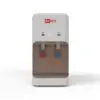
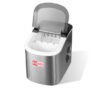
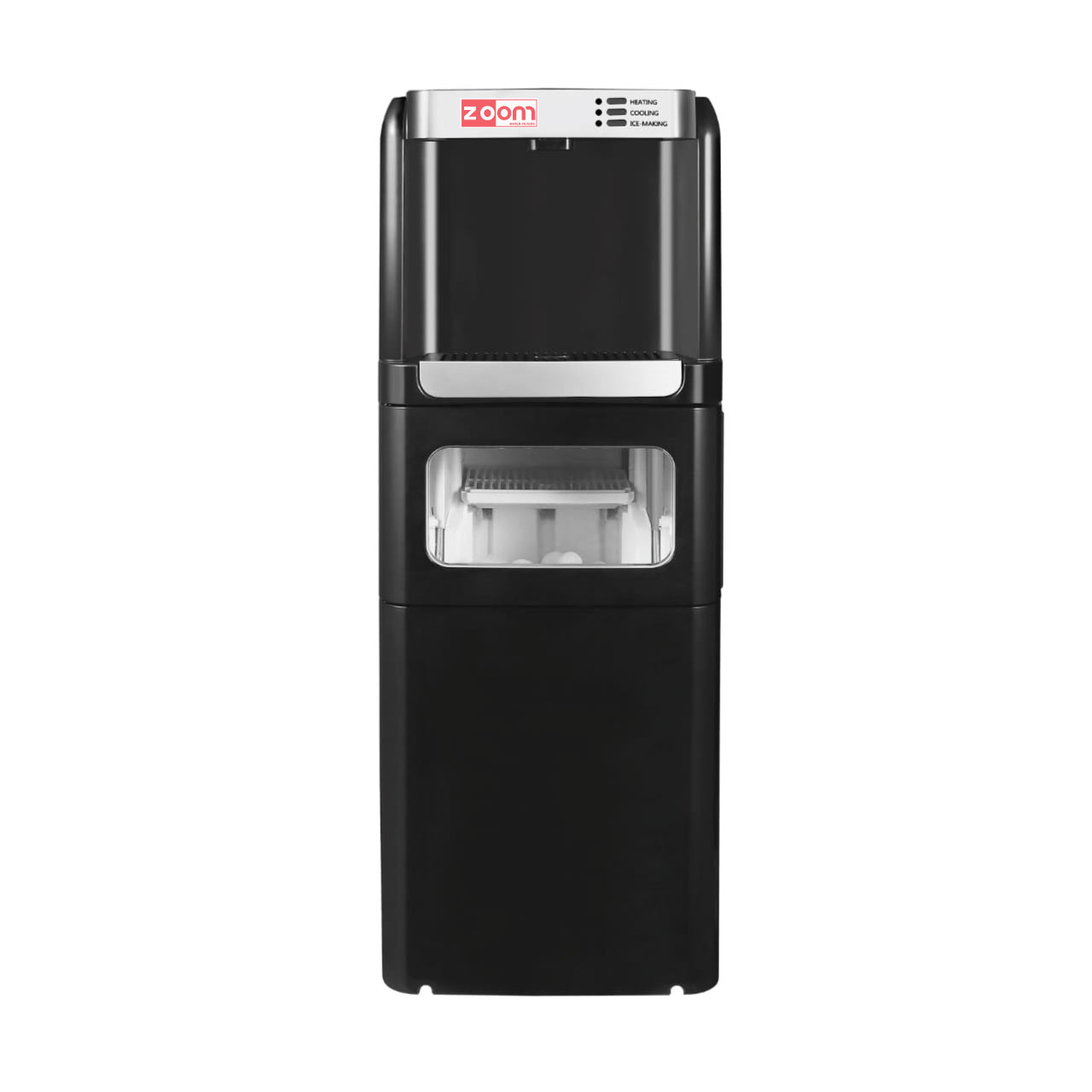
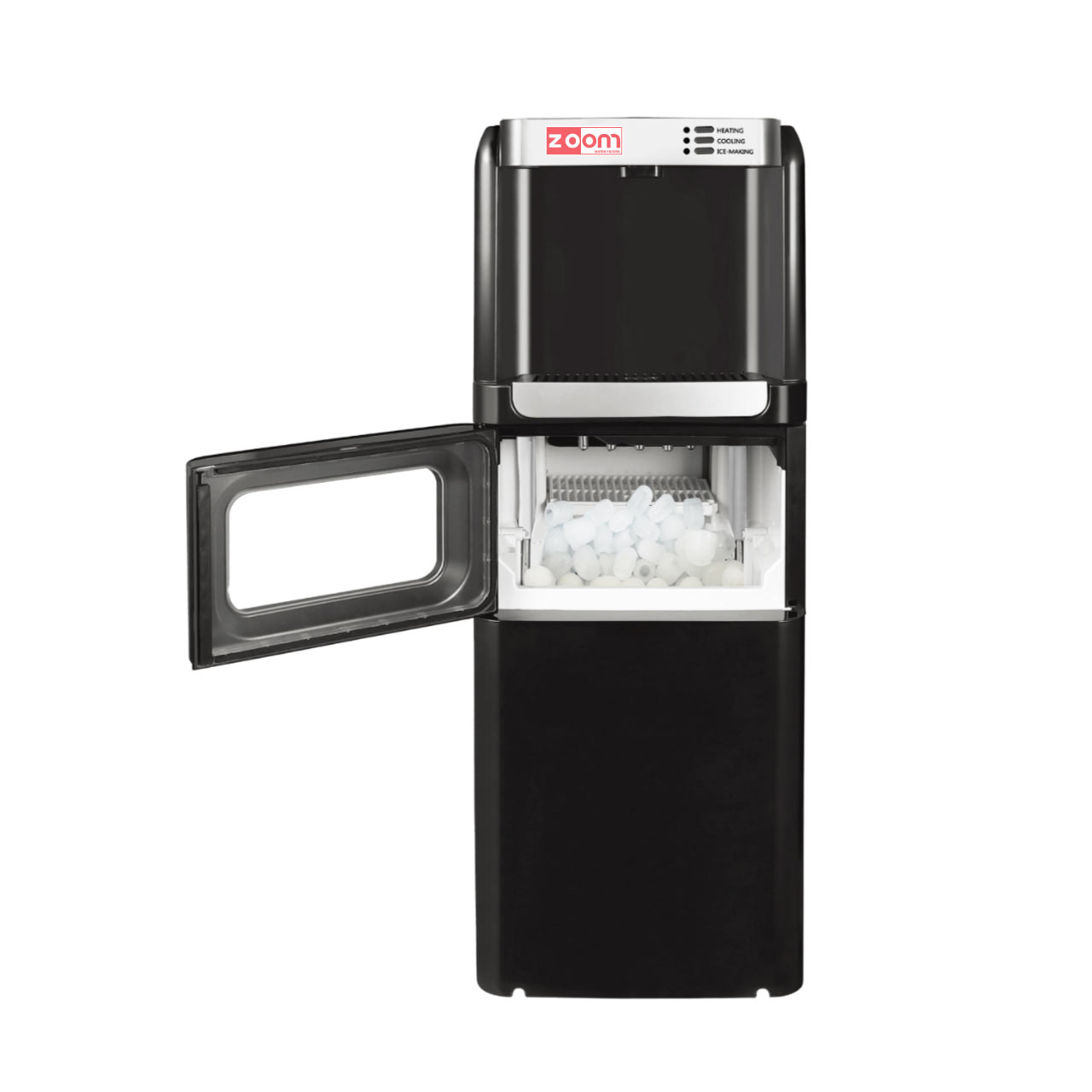
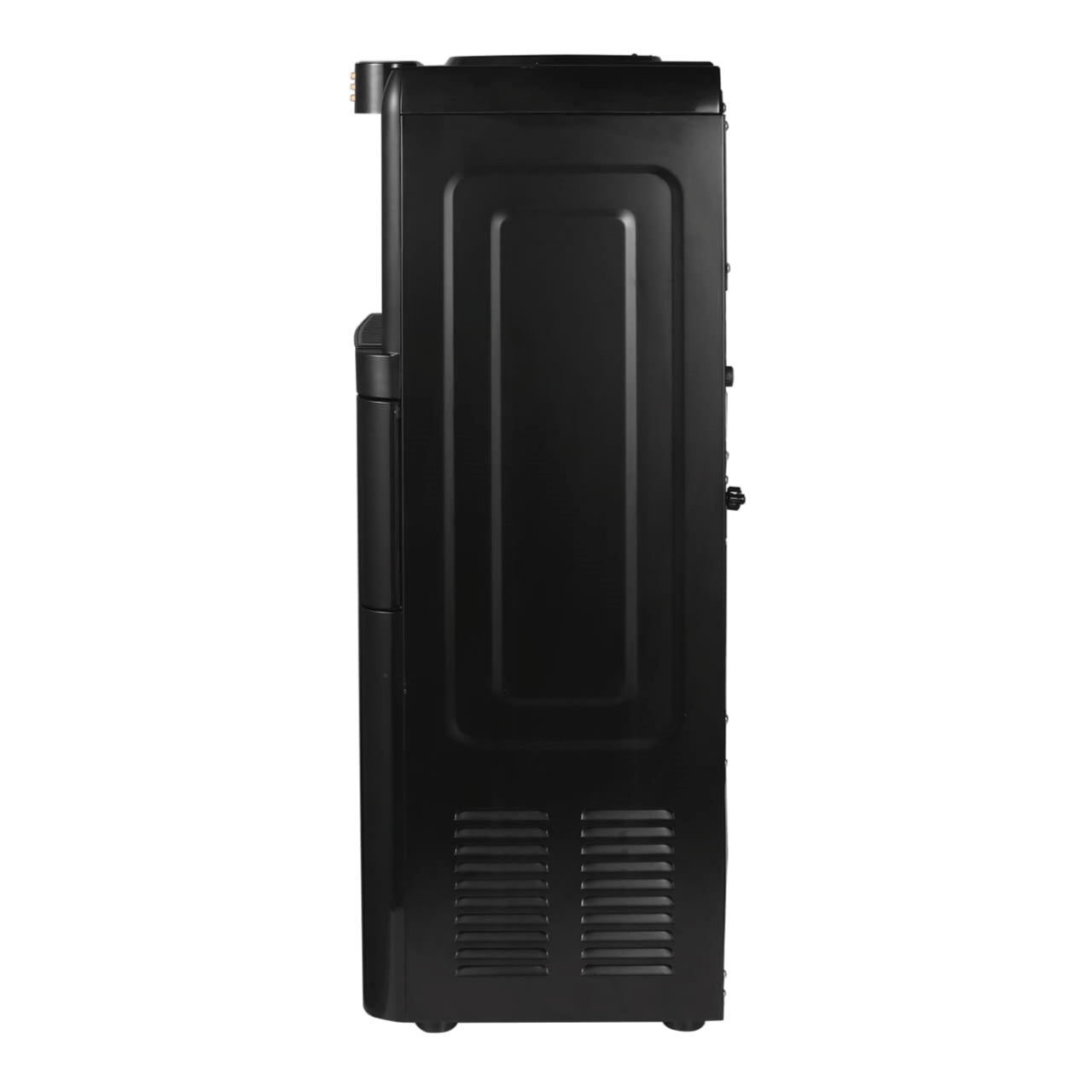
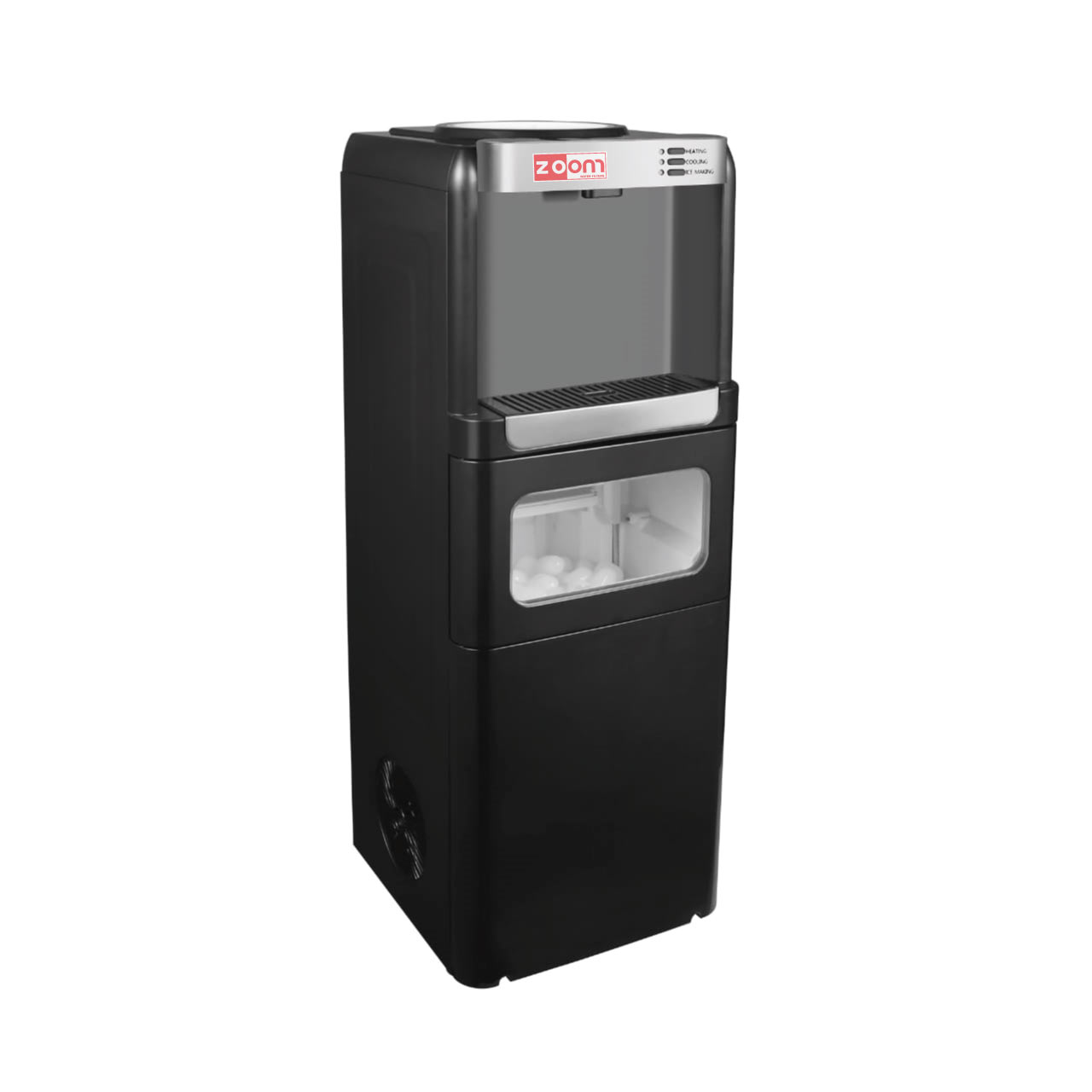
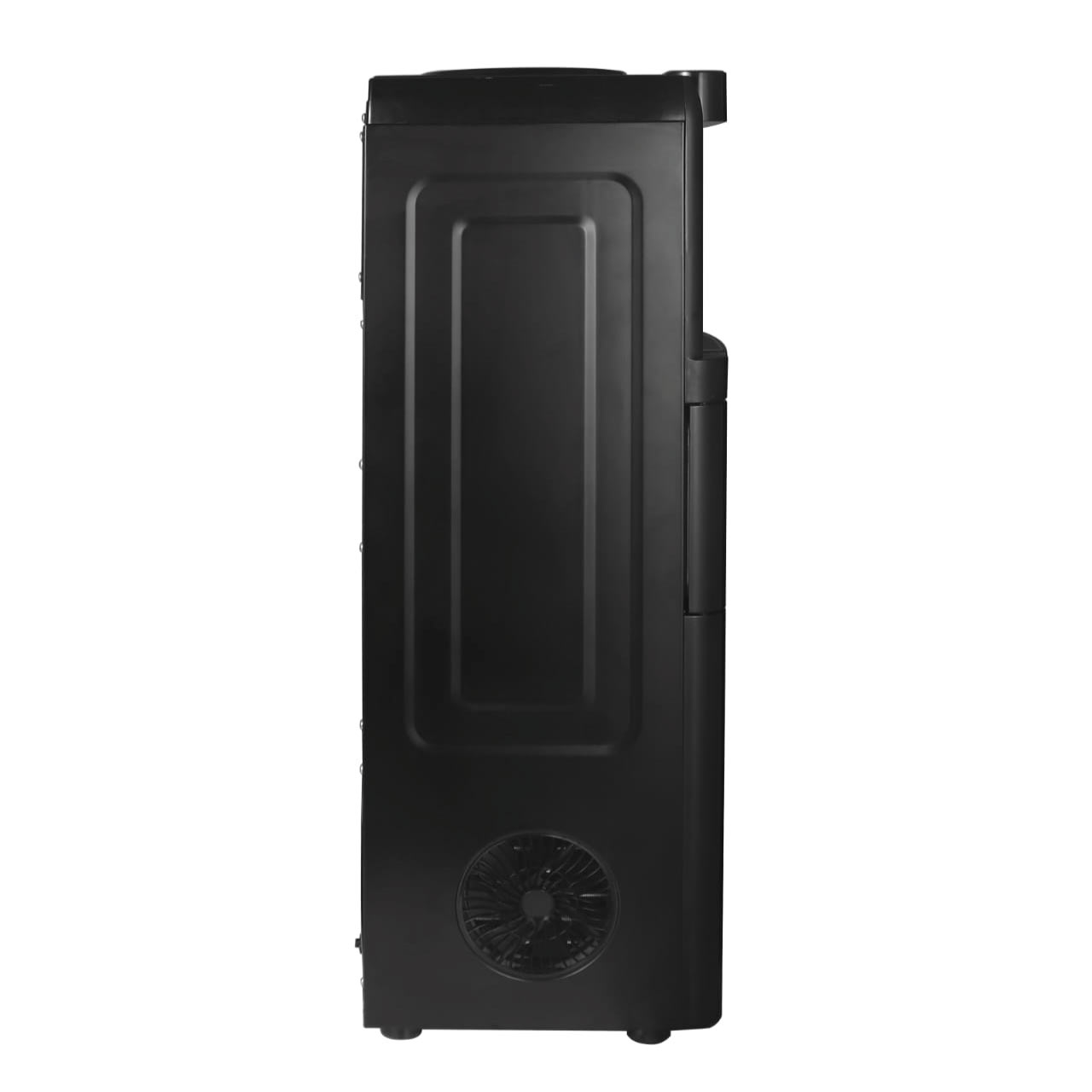


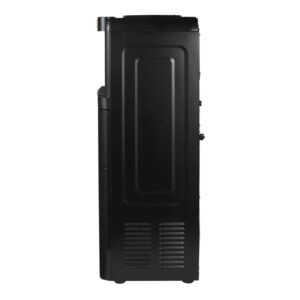
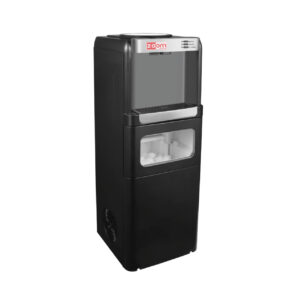
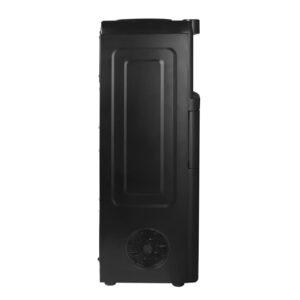
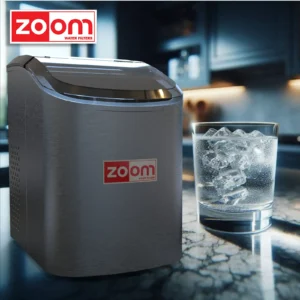
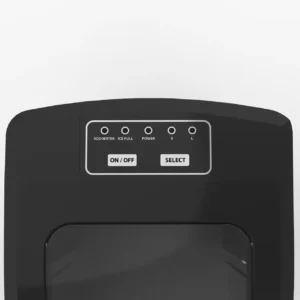
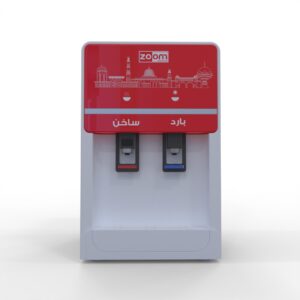
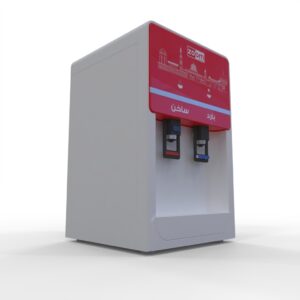
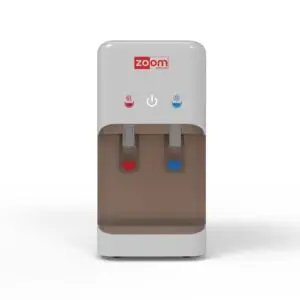
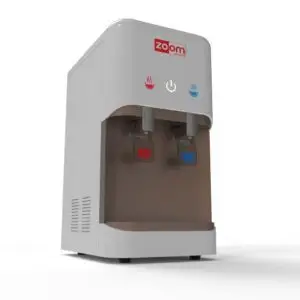
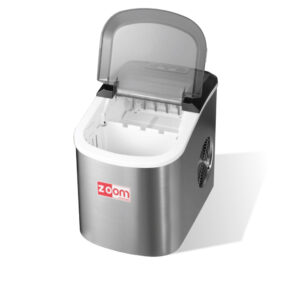
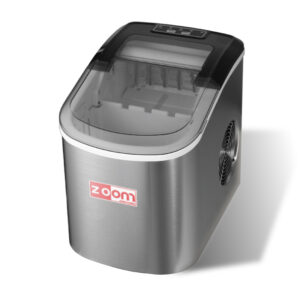
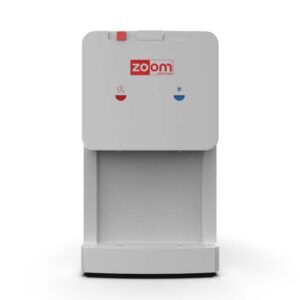
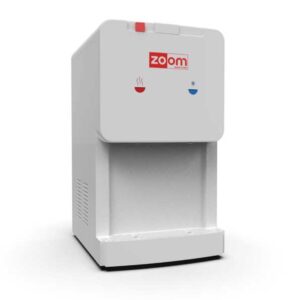


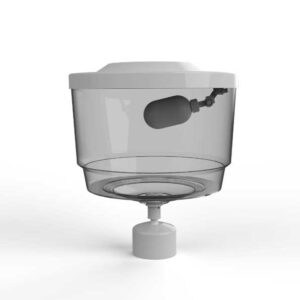
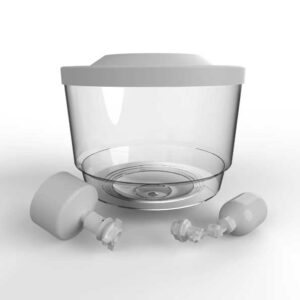
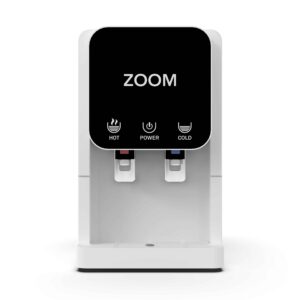
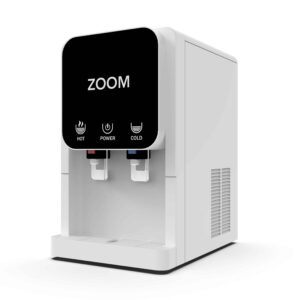
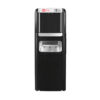
Reviews
There are no reviews yet.